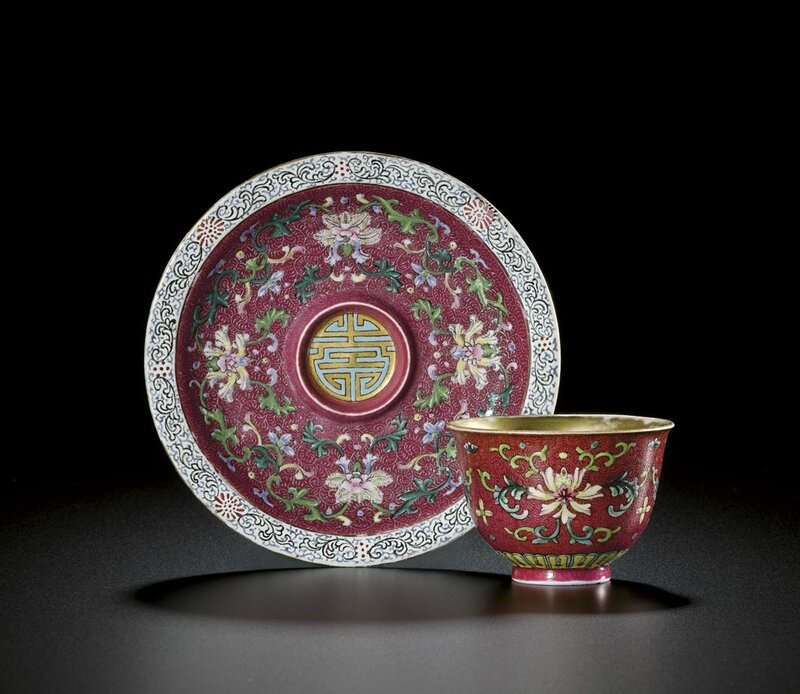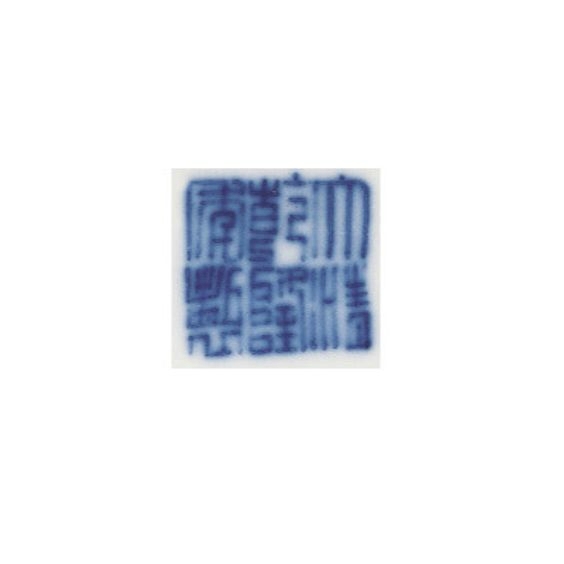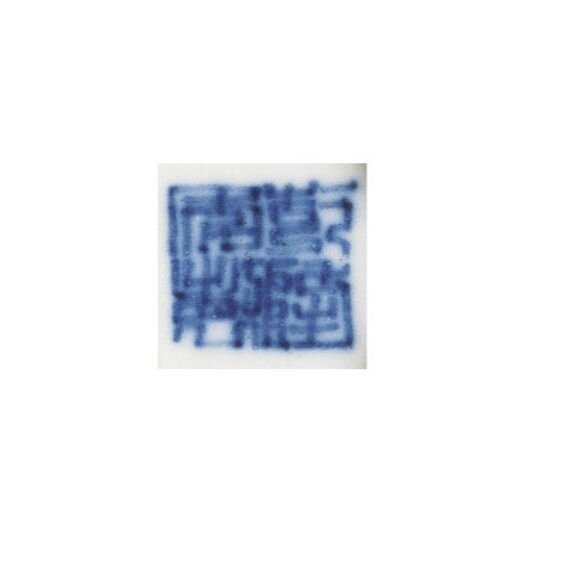A rare famille-rose ruby ground wine cup and saucer, Seal mark and period of Qianlong (1736-1795)
Lot 1605. A rare famille-rose ruby ground wine cup and saucer, Seal mark and period of Qianlong (1736-1795); cup: diameter 6.4 cm., 2 1/2 in. saucer: 12 cm., 4 3/4 in. Est. 1,000,000 — 1,500,000 HKD. Lot Sold 1,220,000 HKD. photo courtesy Sotheby's 2009.
delicately potted, the deep sides of the wine cup finely painted on the exterior with three formal lotus flowers encircled by scrolling foliate leaves, all reserved on a ruby-red ground further incised with a fine sgraffiatofeathered scrolls, the short foot encircled by yellow upright petal lappets, the interior dressed in gold, the base inscribed in underglaze-blue with a six-character reign mark; the matching saucer with shallow rounded sides rising to a wide everted rim painted with flowers and scrolls on a white ground, the centre set with a countersunk well encircled by a raised ridge and painted with a turquoise shou character on a gold ground, the cavetto similarly decorated with lotus flowers alternating with lilies, all with scrolling foliate leaves, reserved on a ruby-red ground incised with sgraffiato feathered scrolls, the reverse similarly decorated with prunus florets, the underside inscribed with a six-character reign mark in underglaze blue.
Provenance: Chait Galleries, New York, 30th December 1969.
Note: Impressive for the expertly decorated design of lotus scrolls on a sgraffiato ground, the present cup and saucer highlight the technical proficiency of porcelain manufacturers at Jingdezhen under the Qianlong reign. Although no other cup and saucer set of this decoration appears to have been published, a closely related saucer, in the Bushell Collection, is illustrated in Cosmo Monkhouse, A History and Description of Chinese Porcelain, London, 1901, fig. 44; and a smaller cup of similar form and decoration, but with the mark Bao se zhai zhi (Studio for the Precious and Miserly) on the base, was sold in these rooms, 28th November 1979, lot 236.
Compare shaped cup and saucer sets similarly decorated in famille-rose enamels on a sgraffiato ruby-ground, with Qianlong reign mark and of the period, but with the saucer raised on small feet, in the National Palace Museum, Taipei, included in the exhibition Stunning Decorative Porcelains from the Ch'ien-lung Reign, National Palace Museum, Taipei, 2008, such as a petal-lobed set painted with five radiating panels of blossoming lotus stems, cat. no. 9; and a quatrefoil example deorated with four circular landscape panels, cat. no. 8.
For Qianlong cups of slightly larger proportions and straight sides rising from a countersunk base, painted with a related blossoming lotus scroll on an incised ruby-ground, see one sold at Christie's New York, 2nd December 1993, lot 344, and again in these rooms, 8th April 2007, lot 801; and another, but decorated with a mixed-flower scroll, in the Nanjing Museum, included in the exhibition Qing Imperial Porcelain of the Kangxi, Yongzheng and Qianlong Reigns, Nanjing Museum, 1995, cat. no. 94. Compare also the cover of an engraved ruby-ground cup, similarly decorated with a floral design sold in our London rooms, 6th December 1994, lot 211.
The complicated and laborious sgraffiato technique here employed was first included in the repertoire of the Jingdezhen potters during the Qianlong period and was reserved for decorating very special pieces. Commonly known as jinshang tianhua, ('adding decorative pattern onto brocades'), the technique consisted of reserving the design on a monochrome enamel ground, which itself is structured by needle-point etching of endless scrolling fronds. Sgraffiato was more often restricted to smaller subsidiary borders, rather than being used for the main field of decoration, due to the difficulty of achieving an evenness in the enamel over a large surface.
For a Yongzheng cup and saucer of this form and size, with reign mark and of the period, enamelled with shaped yellow-ground panels of peony blossoms on a plain ruby-ground and the exterior of the saucer decorated with iron red bats on a plain white ground, see one illustrated in The Tsui Museum of Art. Chinese Ceramics IV. Qing Dynasty, Hong Kong, 1995, pl. 157, sold at Christie's Hong Kong, 29th April 1999, lot 537.
Sotheby's. Fine Chinese Ceramics & Works of Art, Hong Kong, 08 Oct 2009

/https%3A%2F%2Fprofilepics.canalblog.com%2Fprofilepics%2F1%2F0%2F100183.jpg)
/https%3A%2F%2Fstorage.canalblog.com%2F03%2F02%2F119589%2F96711876_o.jpg)
/https%3A%2F%2Fstorage.canalblog.com%2F11%2F31%2F119589%2F94773502_o.jpg)
/https%3A%2F%2Fstorage.canalblog.com%2F20%2F83%2F119589%2F94772815_o.jpg)
/https%3A%2F%2Fstorage.canalblog.com%2F26%2F72%2F119589%2F75604929_o.jpg)
/https%3A%2F%2Fstorage.canalblog.com%2F59%2F60%2F119589%2F26458628_o.jpg)





/image%2F1371349%2F20240402%2Fob_9318b6_130-1.jpg)
/image%2F1371349%2F20240402%2Fob_7227e1_129-1.jpg)
/image%2F1371349%2F20240402%2Fob_e7099e_128-1.jpg)
/image%2F1371349%2F20240401%2Fob_834d8f_telechargement.jpg)